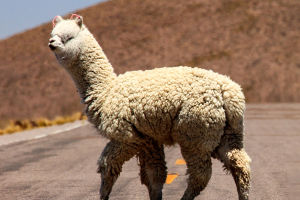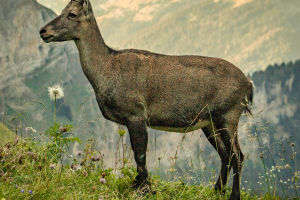A recent international study has uncovered a fascinating insight into the mechanics of maximum running speed in terrestrial animals.
This research reveals that the ability to sprint at top speeds is intricately tied to two critical factors: muscle contraction speed and amplitude.
Remarkably, in medium-sized terrestrial creatures like cheetahs, these two limiting factors converge at an optimal balance, explaining why these animals, rather than larger ones like elephants or smaller ones like ants, are the speed champions of the animal kingdom. This groundbreaking discovery holds promise for informing the design of future robots with enhanced running capabilities.
Led by a consortium of institutions including Imperial College London, the international research team developed a sophisticated physical model to delve into how muscles impose constraints on an animal's maximum running velocity. According to this model, the first constraint termed the "kinetic capacity limit," correlates with muscle contraction speed.
In contrast to their larger counterparts, smaller animals generate disproportionately greater force from their muscles during running, restricting the speed at which their muscles can contract. The second constraint, known as the "work capacity limit," is linked to muscle contraction amplitude.
Due to their heavier weight, larger animals experience reduced muscle force relative to their body mass, which constrains the amplitude of muscle contractions.
The researchers illustrate this concept vividly with examples. For massive animals like rhinos or elephants, sprinting is akin to hoisting a colossal weight, as their comparatively weaker muscles struggle against gravity's formidable pull. Consequently, these creatures are compelled to slow down as their mass increases.
Conversely, medium-sized animals such as cheetahs, typically weighing around 50 kilograms, occupy a physiological "sweet spot" where both kinetic and work capacity limits are harmoniously balanced. This equilibrium facilitates lightning-fast speeds, with cheetahs clocking velocities over a hundred kilometers per hour.
Beyond elucidating the mechanics of rapid locomotion, this novel model offers insights into inter-species variations among animal groups. Consider, for instance, the discrepancy between large reptiles like lizards and crocodiles, which, despite their smaller size and slower pace, exhibit a different locomotive strategy compared to large mammals.
The explanation lies in the proportion of limb muscles relative to body weight: reptiles, with their comparatively diminutive limb muscles, hit their work limit at a smaller size, necessitating a sleeker physique for swift movement.
Published in the prestigious journal Nature Communications, this research represents a pivotal advancement in our understanding of animal biomechanics. As the study's dataset currently encompasses approximately 400 terrestrial species, future investigations aim to extend this analysis to animals traversing aquatic environments and soaring through the skies.
Such endeavors promise to unravel further intricacies in the relationship between size and speed across diverse habitats and evolutionary niches.


